Green Bay's Cap Space Now and in September (Rule of 51)
The off-season is all about building the roster. That is done through the draft, free agency, signing UDFAs and veterans who get cut later this summer, all while keeping an eye on the cap. Now that our draft picks have been signed, I can better estimate the cap situation.
At present, our cap space is calculated under the Rule of 51. Those numbers can be easily found at OTC or Sportrac. The two sites do not agree with each other, and both have errors in reporting on the contracts recently signed by our draft picks. OTC estimates Green Bay's cap space at $13.377 million and Sportrac estimates it at $10.119 million as of May 23, 2018.
But what will our cap situation look like when the games start in September and the Rule of 51 expires? To run those numbers, I have made some predictions as to which players will make the 53-man roster using what appears to be the "house opinion.” Well, perhaps listing Ripkowski and Jake Ryan as good bets instead of locks might not reflect the opinion of the average packer fan, but since I include their cap hits in my calculations, it does not matter for the purposes of this article.

The thirty-two players that general opinion suggests are locks carry a combined cap hit of $145.069 million. The twelve players who appear to be good bets carry a combined cap hit of another $11.405 million, for a total of $156.474 million. I am using zero baseline budgeting, so I am only including in my calculations players generally deemed to be locks or good bets. That leaves nine more open roster spots.
Looking over the internal candidates and their respective cap hits for those nine open roster spots, simply assigning a rough charge of $625,000 for each open roster spot looks about right. Some prospects have cap charges a bit lower and some have cap hits that a little higher.
True, the draft picks who are not locks or good bets carry some dead money in the form of signing bonuses (they would be released, generating dead money as their signing bonuses accelerate, then pass through waivers, with some of them signing onto the practice squad at $129 thousand per year). Does $625,000 work out? Let’s look at the wide receiver group.
If Davis, St. Brown, and Valdez-Scantling do not end up making the 53-man roster, cutting them generates almost $450,000 in dead money. It also most likely means that Yancey, Clark, and perhaps Kumerow beat them out (unlikely, or it might mean we picked up a free agent). The cap spaced used then would be $1.515 million for Yancey, Clark, and Kumerow, plus $449,400 in dead money, for a total of $1.964 million, or $655 thousand per roster spot. That would put my estimate over by about $90,000, which is not all that significant. The other open roster spots should compensate. Whitehead and Evans making the team ($630,000 and $555,000) would recoup about $65,000.
I listed Cole Madison as a good bet since Green Bay seems high on him, and perhaps realizes that he might need a year of coaching and in the weight room, but mostly because fans seem to like his chances. That, combined with his status as a high fifth rounder and his $324 thousand dead money hit if cut suggests that he is a good bet to make the team.
Nine times $625,000 equals $5.625 million. That added to the $156.474 million for the 32 locks and 12 good bets leads to cap charges for the 53 man roster equals $162.099 million. Adding last year's dead money charge of $8.026 million (resolution of Green Bay's appeal of the Bennett signing bonus is still pending), plus $1.29 million (the minimum cost allowed by the CBA for a 10- man practice squad) brings us up to $171.416 million. Deducting that from the salary cap equals $5.784 million. If we wanted to dip into our rolled over cap space of $3.934 million, that would result in $9.718 million in available salary cap space.
I have only dealt with internal candidates for those nine open roster spots. There are reports that TE Marcedes Lewis plans to meet with Green Bay. I have only 2 locks/good bets on the roster, and surely we will keep three TEs. Marcedes Lewis fits the bill if Green Bay wants a blocking tight end. Lewis likely would cost quite a bit more than Emmanuel Byrd. Philadelphia just released ILB Mychal Kendricks, whose name has often been associated with Green Bay in the past. He also would carry a significant price tag.
I do think it would be prudent to make some adjustments to that cap space estimate. General opinion suggests that Green Bay will cut Rollins, Hundley, Looney, Donnerson, perhaps Mays at a charge of $460 thousand. If not all of them, then perhaps Valdez-Scandling, who is very raw and has a potential dead money hit of $217K if he is cut and later signed to the practice squad, or one of the other drafted wide receivers might be cut. Trevor Davis also is on the bubble according to fan opinion. These cuts could easily cost $500 thousand or more in dead money charges.
It also seems prudent to set aside $500 thousand in cap space for injury settlements and IR payments to camp bodies who otherwise would not have made the team. In 2017, Talley, Waters, and Taylor Peppers combined for $1.18M in IR costs, most of which I suggest Green Bay did not expect. In 2016, Crockett, Jackson, and Dorleant ran $771 thousand. 2015 did not have any costs for players never expected to make the team (players like Jordy Nelson are not camp bodies). 2014 had IR costs of $837 thousand for OG Aaron Adams, Luther Robinson, and Kevin Dorsey. The exact amount cannot be known, but something noticeable is foreseeable.
The Packers probably will have about $5.8 million in salary cap space and perhaps as much as $9.7 million of space if GM Gutekunst is willing to break into the piggy bank under the rules that begin in September given the above. Each person can decide how much money, if any, they want to roll over, spend on veterans who get cut this summer, or on a player who has been an FA for some time now.
The Packers probably will have about $5.8 million in salary cap space and perhaps as much as $9.7 million of space if GM Gutekunst is willing to break into the piggy bank under the rules that begin in September given the above. Each person can decide how much money, if any, they want to roll over, spend on veterans who get cut this summer, or on a player who has been an FA for some time now.
PLEASE SUBSCRIBE TO OUR CHEESEHEAD NATION WEEKLY NEWSLETTER HERE.
__________________________
NFL Categories:


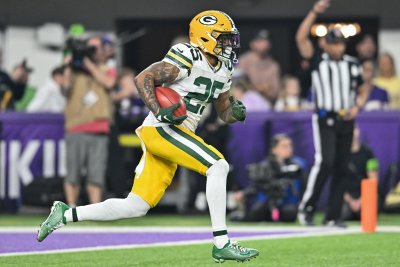

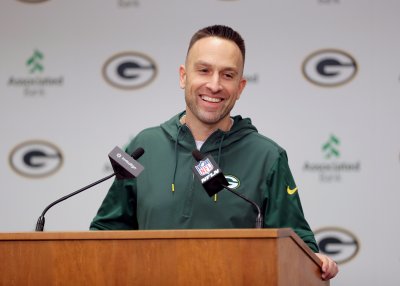
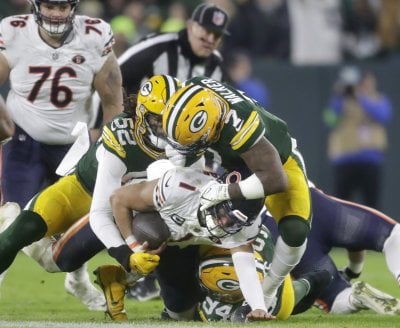



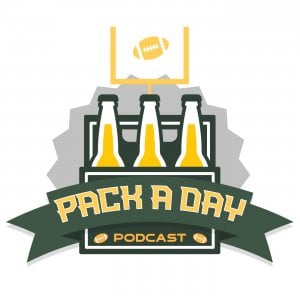

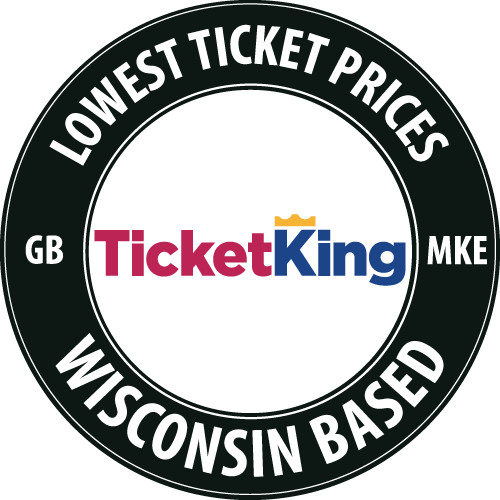
Comments (15)
ricky
May 24, 2018 at 06:21 pm
How would Rodgers' new contract impact these calculations? Would the Packers most likely gain or lose cap space? I realize this would depend on the structure of the contract.
Dave Hanner
May 24, 2018 at 07:35 pm
Very well written article but the biggest factor of all that seems overlooked is the impact of the new AR deal.
Thegreatreynoldo
May 24, 2018 at 08:06 pm
Thank you. I didn't mention AR because I am kind of tired of reading that line at the end of articles. I thought about it, but ennui won. I've written about what GB might do with AR's contract and how it might actually look. GB could keep his cap hit the same for 2018 (my gut says that is the most likely scenario) or increase it or reduce it depending on circumstance.
I wonder if they wait for a bit to see what vets get cut later or even how some of the 2nd and 3rd-year players look before finalizing AR's contract? That is, if they wait to see if they need a little more cap room to sign a FA before finalizing AR's deal?
Lare
May 24, 2018 at 06:50 pm
If one of the current OL looks like he's able to handle the RT position I wouldn't be surprised if they cut Bulaga. That would free up a few million dollars.
The Packers reportedly asked him to take a pay cut and he refused. No other team will sign him anyway while he's injured, and the Packers can always re-sign him if needed.
Lare
May 24, 2018 at 06:55 pm
The Packers signed Marcedes Lewis, that will throw off the salary cap numbers a little bit.
Thegreatreynoldo
May 24, 2018 at 08:10 pm
Since I didn't count Byrd's contract and Lewis is just taking one of the 9 open roster spots, whatever his cap hit is for 2018 is the amount you should deduct from our available cap. IDK, $1.5M or more seems likely. So figure maybe $8M left. On my spreadsheet, I didn't list Byrd as a good bet or long shot, I made a separate category of "need a body" since we need 3 TEs. I assumed that we'd sign a FA: I didn't think having a 3rd TE on the PS answered GB's need.
CM3 said the depth behind him isn't that great. It is obviously true, so GB didn't ask him for a pay cut. Bulaga looked at the depth behind him and reached the same conclusion about RT. Cutting Bulaga would cost Bulaga almost $3M if he would have been on the PUP. Depends on Bulaga, but I am petty enough that I might not re-sign with the team that did that to me.
croatpackfan
May 25, 2018 at 02:19 am
Thegreatreynoldo,
thank you for this insight and your effort. It is very interesting... Your article shows how good you knows Salary Cap rules and possibilities.
However, Russ Ball was known as Salary Cap guru, so I would not be surprise if he find a way to free some additional space by his expertise...
When all will be done, it will be interesting to see how close you were to the future actual situation!
Good job!
HankScorpio
May 25, 2018 at 06:16 am
The big variable is IR. Once the rule of 51 is longer in effect, everyone carried on IR, PS and active roster must be counted. With a high number of players on IR + active roster + PS, it is possible to be counting 70-80 players, instead of just the top 51. If all the IR-replacements are signed to the vet min for their experience level, that's around $450-$800k each. That's not a lot for one but it adds up if you get to counting 10 of them.
A $4-$5 mil buffer for IR, or even more, is something they'll want to maintain and will probably need to use. That's "extra" space needed just to field a complete 53 man roster each week. So the cap space available now is something of an illusion. Responsible budgeting accounts for the IR factor.
Thegreatreynoldo
May 25, 2018 at 12:49 pm
I've been working on another article but realized that using Sportrac's figures is problematic. [I spent maybe 20 hours before I realized that I couldn't use Sportrac's databases but had to do the calculations by hand.] The amount of cap used on IR is amazing around the NFL. Veteran starters with big salaries landing on IR is something every team experiences. Sportrac lists GB with $40.8M in IR cap space usage in 2017. $20M for AR, and $14M more for Bulaga (OK with that) and Perry (he did end up on IR and didn't return - so I guess but he played 12 games so he doesn't represent a complete loss of production as IR stats might lead one to believe).
The best teams can do when starters go on IR usually is to rely on their depth to compensate, or if the team is lucky and/or astute, find a quality street FA during the season. In-season trades are fairly rare, but that is another avenue, though it takes a while for players from other teams (or their PS squads) to get in sync with our players. GMs can't really budget for IR costs since it is so dependent on which players get hurt.
Here though, I was focusing on roster-building during the off-season. I looked for players who weren't really expected to make the roster, and maybe not even the PS, really unexpected costs. I at least wanted to remind readers that as an example the Packers probably never expected Talley to cost $348K to their cap, and perhaps expected Waters to cost just $122K as a PS guy.
For GB Sportrac lists "IR money" as $40.8M in 2017; $15.1M in 2016 (Shields mostly); $5.8M in 2015; $838K in 2014; $12M in 2013 (doesn't include AR since he returned - and thus you can sense my frustration with Sportrac's methodology/utility). If Sportrac prorated the cap by games played, that would help provide an understanding of how much injuries hurt the team in dollar terms. But if a player gets hurts game one and returns for game 16, his cap money isn't included in Sportrac's IR Money stat.
Anyway, IR wildly fluctuates, so it can't be budgeted. But some reserve for camp bodies who end up on IR is something that teams should set a hedge against in figuring what they can spend. Teams can generate more cap space, but that usually but not always works against the team in the long term.
There is something I've coined "churn" where cap space just disappears during the season. I wished I'd charted it but started looking at it back in 2015 or so. IIRC, that is, going from memory, from the start of the season to the end for GB about $2M to as much as $5M just seemingly disappears. So your point, Hank, is well taken.
Thegreatreynoldo
May 25, 2018 at 01:25 pm
GB's number of players on IR:
2011: No data
2012: 4 ($5.1M)
2013: 8 ($11.99M)
2014: 3 ($0.838M)
2015: 4 ($5.8M)
2016: 7 ($15.1M)
2017: 14 ($40.8M)
2011: Nick Collins, Alex Green, Quarless, Guy, Sherrod, Shaky Smithson, so 6 at $6.07M (about $9.9M in today's cap dollars).
Look at 2014/2015: It really matters which players get hurt and end up on IR!
https://www.pro-football-reference.com/teams/gnb/2011_injuries.htm
HankScorpio
May 25, 2018 at 04:32 pm
I don't mean budgeting the salaries of the players that end up on IR. That would be impossible to forecast, as you point out.
I'm talking about budgeting to be able to sign replacements on the roster. That's the cap "churn". Signing 5 guys at 450k minimum to replace 5 guys on IR = $2.25 mil in cap space. 10 guys at that price = $4.5 mil. It's easy to discount each one. But they add up. A cap so tight after final cuts that space must be created to accommodate those signings is poor management, IMO.
However, I can see where you were coming from in talking about cap dollars lost due to injury. It would be an interesting stat to measure across the league. If you really wanted to measure it, you'd aggregate the per game cap hit (not salary due to prorated bonuses) of everyone on the gameday roster and then subtract that from the total cap. The result wouldn't be a perfect measure of cap space "lost" due to injury but it would be pretty darn close. All things being equal, PS dollars are constant across the league and teams will sit 1st or 2nd yr guys when everyone is healthy.
Thegreatreynoldo
May 25, 2018 at 05:48 pm
LOL, yeah, Hank, I just got carried away about IR money since I did a lot of research that doesn't have the usefulness I'd hoped for due to the way Sportrac organized the information.
GB helped pioneer putting per game active bonuses in 2nd contracts to help mitigate this churn. Right now 15 of our 17 highest paid players have per game roster bonuses, many of them enough to completely offset having to promote someone from the PS, with others close. The ones that don't are HHCD (5th yr option outlaws it), and Clark, because it is a rookie contract. Twill has $25K/game active bonus. If he got hurt, paying someone $480/16 = $30K, so that would generate "churn" of just $5K for every game Twill missed.
The middle-class players ($700K to about $2M - about 15 players) all have no game bonuses and cause the issue you have noted, with the rest causing noticeable churn.
At least $2M, and perhaps up to $5M, budgeted for churn is very realistic (at least since I've been watching it for the last 3 seasons). Most players don't go on IR game one, and some sit on the IR for a time, so that reduces it a bit. If a guy goes on IR after playing 8 games, then the cost of his replacement is $240K, rather than $480K. A few of these guys have split contracts, which helps a bit. I usually include paying incentives in "churn" and game active bonuses that were NLTBE, and mistakes like cutting RJF after one game thus guaranteeing his salary. So yeah, around $4M probably is realistic.
We've had 40 players on IR in the last 7 seasons, and several more on PUP (which has the same effect but just for 6 games, hopefully), so that's about 6 per season.
It makes me unpopular when I suggest rolling over $3M, budgeting for $4M in churn, which means that $9.8M cap space I mentioned in the article probably should mean about $2.8M to $5.8M (dipping into rollover) to spend on FAs.
HankScorpio
May 25, 2018 at 06:48 pm
Great point on the per game roster bonuses being something of an offset on signing a replacement. I never made that connection but it's a very real one.
Leads nicely into the point about signing for 8 games = half the cap hit of the yearly salary, which was another good one.
So yeah, lots of offsets for the churn. But no doubt a very real part of navigating the cap for NFL teams. And there is no long-term harm in "budgeting" too conservatively. You can always roll any left-over into next year.
Thegreatreynoldo
May 25, 2018 at 02:06 pm
Having read Andy Herman's film review on our OLBs, I wonder if I should have listed Fackrell as a good bet. I did list him as a good bet because I was trying not to substitute my own player evaluation and felt that general opinion makes him a good bet,
If Fackrell doesn't make the 53 and Donnerson does instead, that would cut our cap space by peanuts, about $10K (since Fackrell still carries some signing bonus that would accelerate). Odom instead of Fackrell would decrease our cap space by $65K. Well worth it if either is an upgrade.
flackcatcher
May 25, 2018 at 06:10 pm
It's a toss up at this point TGR. Fackrell is a player without a clear position in the packer LB group. I believe that with the shift toward hybrid/DB there are fewer roster spots open for LB as a group. Unless he shows early, he might an early roster cut. I also believe the same goes for Odom as both the drafted and UDFA LB are faster and more athletic than either player. Plus they suffer from being TT 'guys' and they could be bottom of the roster players under the new scheme. But I'm fine with your list either way.